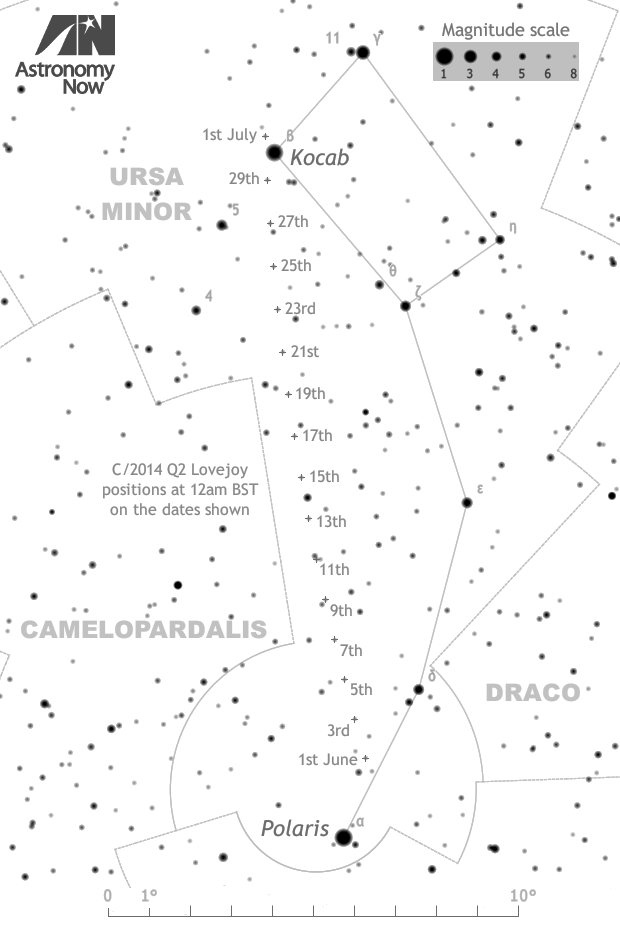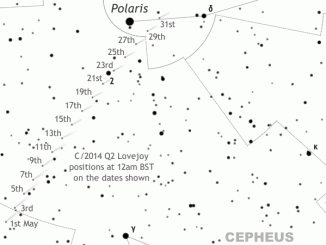
But all good things must come to an end and, despite its enviable position in the sky for Northern Hemisphere sky watchers, Comet Lovejoy is battling summer twilight and fading (albeit much slower than predictions) from magnitude +8 to +9 throughout June as its distance from Earth increases from 2.3 to 2.52 astronomical units.
C/2014 Q2 traverses some 15° of the constellation Ursa Minor during June, averaging about 0.5° — or the diameter of the Full Moon — per day. Having passed just 1.1° from the Pole Star, Polaris, in late May, Comet Lovejoy passes just 0.25° from magnitude +2 star β Ursae Minoris — commonly known as Kocab — in the small hours of June 30th.
Observers attempting to view or photograph Comet Lovejoy during its June swan song should avoid the gibbous phases of the Moon (use our Almanac to find Moon-free nights) and try to observe close to 1 am BST in order to mitigate the effects of twilight. Clear skies!
Inside the magazine
You can find out more about observing the Solar System in the June edition of Astronomy Now in addition to a full observing guide to the night sky.
Never miss an issue by subscribing to the UK’s biggest astronomy magazine. Also available for iPad/iPhone and Android devices.




